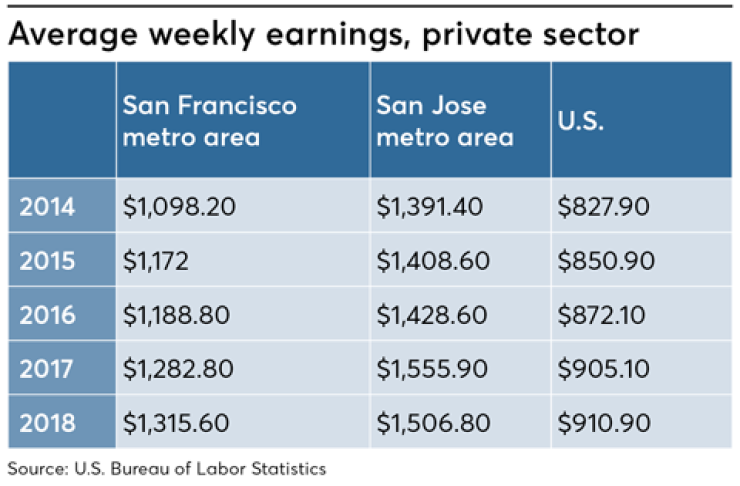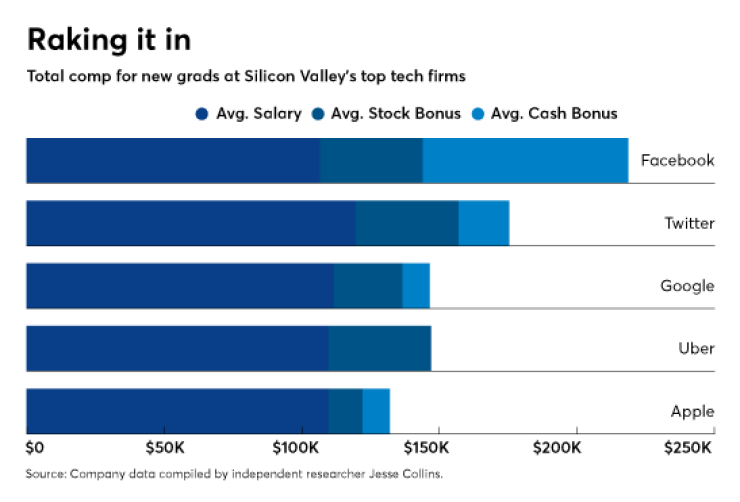The light flashed green at the busy San Francisco intersection as Cody Wilson joined the backpack-toting crowd walking to work. Just then, his cellphone rang. A representative from Bank of America, his bank, was calling to get his opinion on its Merrill Edge trading platform.
Wilson, a 31-year-old customer success manager at a data startup, gave the rep an earful. The platform was neither as much fun nor as simple to use as the millennial-focused trading app Robinhood, he said. Nor did the bank’s app have an easy way to invest in low-cost mutual funds; much of its fare instead was Merrill Edge Select Funds.
“In my peer group, there are two divides,” Wilson said later. “People who sign up for a 401(k) at work, pick a target date fund and that’s it. The flip side is people who know more but are very price conscious — expense ratios, what return they are getting out of a fund.”
By the time Wilson had finished crossing the street, the Merrill rep had received a valuable lesson: just because a platform is digital doesn’t mean that’s all a client wants. It’s a lesson RIAs would do well to heed as they, too, grapple with attracting clients in an increasingly digital-first market. If they ignore the challenge, their practices risk becoming obsolete.
“Advisors will always be needed because there will always be people who want to outsource work regardless of value for money,” says Iraklis Kourtidis, CEO of the automated investing software firm Rowboat Advisors in Menlo Park, California. “But over time, I see people wanting to interact with institutions like banks less and less … and I don’t know if planning will retain value, because it’s so subjective.”
But could the solution, as well as the problem, lie in Silicon Valley?
The prevailing attitude among Bay Area advisors is to acknowledge digital-first as a real transformation in wealth management and automated advice as a valid option, rather than dismissing it entirely.
Many of their clients are like Wilson — young, wealthy, plugged-in and highly skeptical. Yet planners here still win their business, despite an influx of new robo and hybrid digital offerings. Hyperattuned to the challenges facing traditional planning, these advisors possess the tools to combat them. Their successes offer lessons for firms seeking insight into how to evolve.
While many advisors acknowledge that new technology will help them expand their practices and offer more services to clients, it’s not as simple as slapping on a digital platform and calling themselves “hybrid.”
Indeed, even true hybrid firms, where human RIAs work through digital platforms, are seeing a relentless push toward technology that will shift the definition of financial advice as a service. “One way we think about this technology and data wave is that it is going from a world of mass production to mass personalization,” says Jay Shah, CEO of the Bay Area digital advice firm Personal Capital.

Advisors based in the Silicon Valley region recognize, for the most part, that automated advice is not a passing fad. So they embrace it.
Myles VanderWeele, a principal at the advisory Bingham Osborn & Scarborough, says his approach of defending against robo advisors has actually won over skeptical clients.
“I tell them, if you enjoy it, if you get the general basics of risk and return, by all means save yourselves 1% in management fees,” he says. “My experience is most people don’t have the time and end up making mistakes, not because they are dumb, but because life gets in the way.
“Robos are great; I really believe they provide an incredible service,” he adds. “Before, there was no real great way to get a well-diversified, low-cost portfolio calibrated to your risk tolerance if you had [only] $100,000.”
In Silicon Valley, there are constant reminders that business must always evolve, VanderWeele says. “A few years ago, we had clients come in — a married couple, she worked at Google and he worked at Uber,” he recalls. “We used to put fund prospectuses on a CD-ROM and give it to clients as part of the process. We took it out, and the client said, ‘Is that a CD-ROM? I haven’t seen one in years.’ That was the last time we did that.”
ADVISOR CODERS
Advisors need to upgrade their own technology skills, says Jeff Smith, managing partner at San Francisco-based FundX Investment Group.
He is an example. Off-the-shelf rebalancing software didn’t feature the portfolio customization the firm wanted to offer clients, so Smith taught himself to code. Over six months he wrote the rebalancing software the practice uses today. FundX is now considering going to market with the software.
As a bonus, the process helped Smith bond with a number of clients who are developers — they wanted to know how to build the software, which in turn led him to new prospects.

Though he acknowledges they’re not easy to come by, Smith recommends that firms have at least two advisors on staff who know how to code. “It’s where you want to add value,” he says. “It gives you insight into complex thinking, which helps to innovate the firm in general. It’s the future of RIAs and wealth management.”
Technical skills at the advisor level are also important, he adds. As firms grow, they should strive for a little bit of customization, “something different that you can talk about,” he says. “Myself, I can interface with developers in a much more efficient way than if I didn’t have those technical skills. Our website has interactive elements that if I wasn’t a coder, I wouldn’t be able to design with an external firm as efficiently as I can.”
NO SILOS
Bay Area firms are also breaking down traditional approaches to prospecting for clients and servicing them.
At Three Bridge Wealth Advisors in Portola Valley, California, which works with first-generation, self-made and young high-net-worth individuals, the 50 clients are shared, so each advisor knows the details of every client, says Brett Sharkey, a managing director.
“My colleague might be the lead advisor who brought the client into the firm, but everyone is working on that relationship,” Sharkey says. Doing so breaks down silos common in traditional firms, he explains.
It also allows the firm to offer multiple specialized services — private career coaching, medical care, access to employment legal counsel — for clients, many of whom have come into wealth at startups.
Three Bridge undertakes a lengthy screening process, conducting at least three 90-minute conversations with prospects before determining whether to take them on. Clients are asked 60 questions about their financials, values, goals and relationship priorities.

The firm asks which professionals the prospect is already working with, to coordinate outreach. It even asks how much contact the client wants to have. There are typically two advisors present in every client meeting.
It is a very hands-on practice, and doesn’t allow the firm to scale as easily, acknowledges fellow managing director Eric Thurber. “We feel like, in order to have the maximum impact, in terms of what these people want and need, one individual can’t manage that,” he says. “No one can be an expert in everything.”
Another difference between Three Bridge and other firms: It will work with clients who may not yet have the desired level of assets for management but do have the potential to become high earners in the near future and need guidance to get there.
Serving successful serial entrepreneurs and emerging young clients on the cusp of fortune is a balancing act that requires traditional wealth managers and banks to rethink their focus on investment management, Thurber says.
“These people want someone with all the knowledge, expertise and understanding to advise them on what they would do in their situation, not what will make the advisor more money,” he says.
ADVISOR DIVERSITY
Another strategy among regional firms is broad advisor diversity for maximum client appeal. At Mirador Capital Partners’ office in Larkspur, California, north of San Francisco, the team is almost evenly split gender-wise, and its most recent advisor hire is a CFP in her 30s. “We’re growing for the future; we’re building that bench,” says Adrian Jones, the firm’s executive vice president. “We have two women and two men on our management committee, so we have that gender balance. We want to reflect what our communities are like within our own firm. Women are making a ton more financial decisions.”
Gender diversity is just one way the firm is spanning the cultural gap with younger clients, says Dan Murray, a principal at Mirador, which also has an office in Pleasanton, California.
Another is allowing diverse client communication approaches, such as texting. Mobile conversations are actually more engaging, he says, because of their immediacy. “I’ve learned two minutes is a superslow response,” he says.
“The rules of communication have changed forever,” adds Murray, a Gen Xer. “My generation has the steepest learning curve. But if you don’t learn it, it’s like saying I’m moving to Spain to be a financial advisor. If you don’t speak Spanish, you’re not going to get any clients. If you don’t understand this millennial generation or people who are tech-heavy, you’re not going to speak their language.”

Mirador prides itself on being completely transparent about client fees and offering investments that reflect client values, he adds. “That’s what clients are demanding now,” he says. “So make sure on the fee side that clients know what they’re paying for, and you’re delivering on that.”
With many wealth management options available, the winning approach for many young clients is one that is intensely personal and human, not digital or mass emailed, says one prospect.
“The smartest way for these people to get in touch with us younger entrepreneurs who are on the cusp is to go through one of our friends, go through somebody we trust,” says Grant Wernick, founder and CEO of Insight Engines, a machine learning software startup in San Francisco. “It’s just like anything in life; you filter through the people you trust.”
Wernick recalls a deluge of pitches not long after his startup raised over $15 million in capital in July 2017. “All the big firms come at you,” he says. “You’ll get emails from random money managers in New York.”
Another non-starter is the pitch from salespeople, Wernick says. “They’re actually passing you off to someone you’ve never met to manage your money,” he says. “They’re just there to get your money into that institution.”
Firms that win over rich young entrepreneurs need to understand the mindset of these clients, he adds. Personal wealth “is not something we think about every day. It really isn’t,” he says. “If you’re really someone who is trying to found something and change the world, you’re thinking about, ‘How do I make this company I’m creating out of thin air into something bigger?’”
That’s the dichotomy of successful young entrepreneurs in a digital-first world, Wernick says. “Because we have so little time, you actually want a face. You want somebody to call. And that’s interesting in a day and era where I’m trying to automate so much. I’m literally creating a company to augment humans and have machines do the mundane. Yet I want the convenience of a human I can call.”
These people want someone with all the knowledge, expertise and understanding to advise them on what they would do in their situation, not what will make the advisor more money.
This doubling down on human delivery ties to a shift in what future RIA clients expect from financial advice, says Doug Fritz, founder of the Bay Area-based industry consultancy F2 Strategy. “If you hired a smart person, they would buy you a great stock and you’d be able to get a sailboat; that image drove our industry 20 years ago,” Fritz says. “Now the really powerful norm to latch onto is, you will be there when I need you. You’re not just trying to outperform the market, and during a downturn you’ll be there watching my back. For emerging wealthy folks in the last 10 years, that’s what resonates.”
To implant such practice growth strategies, the best way forward is with an incremental focus, says Tim Welsh, founder of the wealth management consulting firm Nexus Strategy.
Take, for instance, the confusion advisors often feel when faced with deciding what tech to invest in. “The technology tools are out there: Black Diamond, Orion, Tamarac, MoneyGuide Pro. Are you using them, or are you defaulting to spreadsheets and email?” Welsh says. “It’s a matter of adoption.”
THE CLIENT EXPERIENCE
Welsh suggests RIAs identify one client experience to improve and deploy the software. “You cannot do everything,” he says. “Pick one piece of your practice for automation. That’s your tech strategy for 2019. If you don’t, the next thing you know, you’re behind in your workflow.”
Advisors should also take heart that the change isn’t for naught; young clients are looking for that connection.
Though Cody Wilson wasn’t impressed with Merrill’s trading platform, he still hopes to one day have a relationship with an advisor. His mother has an advisor in his hometown, Pullman, Washington.
“When I originally sat down with those folks, I didn’t have a lot of assets in play,” he says. “Now it would make more sense, as I am doing more in real estate. I want to get smart about tax harvesting, but I don’t know anything about it. I would defer to a professional on that.”
Like Wernick, Wilson wants a human connection with his wealth. “It would be nice to have a relationship,” he says.





